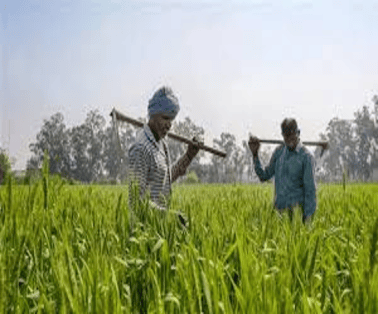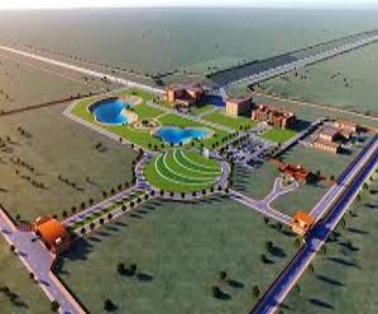The Union Government released the 17th instalment of the PM Kisan Nidhi Yojana as its first major decision after Prime Minister Narendra Modi took oath for his third term. This crucial move underlines the government’s continued commitment to farmer welfare through the PM Kisan scheme.
Key Highlights of PM Kisan Scheme
- This will benefit 9.3 crore farmers and distribute around ₹20,000 crore
- Modi said after signing the file that his Government is fully committed to the welfare of farmers.
- The Opposition said Mr. Modi, by signing the file, has done nobody a great favour as these are legitimate entitlements due to farmers according to his Government’s own policy.
- The 17th instalment of PM Kisan Nidhi was due in April-May 2024, but was delayed by the enforcement of the Model Code of Conduct.
- The ‘one-third’ Pradhan Mantri has done nobody a great favour by signing this file: these are legitimate entitlements due to farmers according to his Government’s own policy,” Mr. Ramesh said.
What is PM Kisan Nidhi Scheme?
- The Pradhan Mantri Kisan Samman Nidhi (PM-KISAN) Scheme is a Central Sector Direct Benefit Transfer (DBT) Scheme.
- The scheme was launched on 24th of February 2019 to give income support to farmers.
- Under the scheme an income support of 6,000/- per year in three equal installments will be provided to all land holding farmer families.
- Definition of family for the scheme is husband, wife and minor children.
- State Government and UT administration will identify the farmer families which are eligible for support as per scheme guidelines.
- The fund will be directly transferred to the bank accounts of the beneficiaries.
- It is being implemented by the Ministry of Agriculture and Farmers Welfare.
- There are various Exclusion Categories for the scheme.
- The Scheme initially provided income support to all Small and Marginal Farmers’ families having cultivable land up to two hectares, but later it was expanded to cover all farmer families irrespective of the size of their landholdings.
Key Features of PM Kisan Yojana
The following categories of beneificiaries of higher economic status shall not be elligible for benefit under the scheme.
- All Institutional Land holders.
- Farmer families which belong to one or more of the following categories:.
- i) Former and present holders of constitutional posts
- ii) Former and present Ministers/ State Ministers and former/present Members of LokSabha/ RajyaSabha/ State Legislative Assemblies/ State Legislative Councils,former and present Mayors of Municipal Corporations, former and present Chairpersons of District Panchayats.
- iii) All serving or retired officers and employees of Central/ State Government Ministries /Offices/Departments and its field units Central or State PSEs and Attached offices /Autonomous Institutions under Government as well as regular employees of the Local Bodies
- vi) All superannuated/retired pensioners whose monthly pension is Rs.10,000/-or more
- v) All Persons who paid Income Tax in last assessment year
- vi) Professionals like Doctors, Engineers, Lawyers, Chartered Accountants, and Architects registered with Professional bodies and carrying out profession by undertaking practices.
Pradhan Mantri Kisan Scheme: Objectives
- To supplement the financial needs of the Small and Marginal Farmers in procuring various inputs to ensure proper crop health and appropriate yields, commensurate with the anticipated farm income at the end of each crop cycle.
- To protect them from falling in the clutches of moneylenders for meeting such expenses and ensure their continuance in the farming activities.
Technological & Process Advancements Done In The Scheme
PM-KISAN Mobile App: It was developed and designed by the National Informatics Centre in collaboration with the Ministry of Electronics and Information Technology.
Self-registration Mechanism: Process of Self-registration of beneficiaries has been made simple and easy through mobile app, PM KISAN portal and walk-ins via Common Service Centers in order to give the maximum benefit to the farmers.
Enhanced Recovery Mechanism: In case of ineligible beneficiary, recovery mechanism has been made very smooth and transparent which doesn’t require Demand Draft or physical cheque to be submitted by the state.
Grievance Redressal& Helpdesk: In order to address the issues and problems faced by the beneficiaries, a holistic grievance redressal mechanism has been envisaged which involves setting up of a central Project Management Unit of PM KisanSammanNidhiYojana at the Centre which performs the overall coordination between all the stakeholders to streamline the processes.
Physical Verification Module: In order to maintain the authenticity and validity of the scheme, a mandatory physical verification of 5% beneficiary every year is being done as per the provisions laid down in the scheme.
Income Tax verification: The beneficiary database in this scheme is being regularly validated with income tax payee database in order to have an audited and authenticated user base.
Demographic Aadhar authentication: To make this whole process more transparent and authenticated, Aadhar validation has been made compulsory.
Challenges and Criticisms
- The impact of PM-KISAN can only be realised through financial support that provides farmers with adequate purchasing power to meet their daily basic necessities. Also, the cash transfer is not linked to the size of the farmer’s land.
- PM-KISAN is not pro-poor since recipients of the scheme seemed to be better off than the general rural population even before the lockdown.
- The scheme excludes even poor rural households that do not own land.
- PM-KISAN is an ambitious scheme that has the potential to deliver significant welfare outcomes but the top-down approach of the government ignores governance constraints..
PM Kisan Scheme: The Way Forward
The release of the 17th PM Kisan instalment reinforces the government’s intent to continue its support for the farming community. However, for PM Kisan to have a transformative impact, it must:
- Address exclusion errors and bring in landless workers under its scope.
- Ensure greater accountability and transparency at the state level.
- Consider linking support to actual input costs or regional price indices.
Conclusion
The PM Kisan Yojana continues to be a cornerstone welfare initiative for India’s agricultural sector. With the 17th instalment already benefiting millions of farmers, the focus must now shift towards enhancing effectiveness, inclusive coverage, and administrative efficiency. As India’s farming landscape evolves, PM Kisan must adapt to meet the changing needs of its beneficiaries.
To Download Monthly Current Affairs PDF Click here
Click here to get a free demo
Discover all about CLAT Exam



